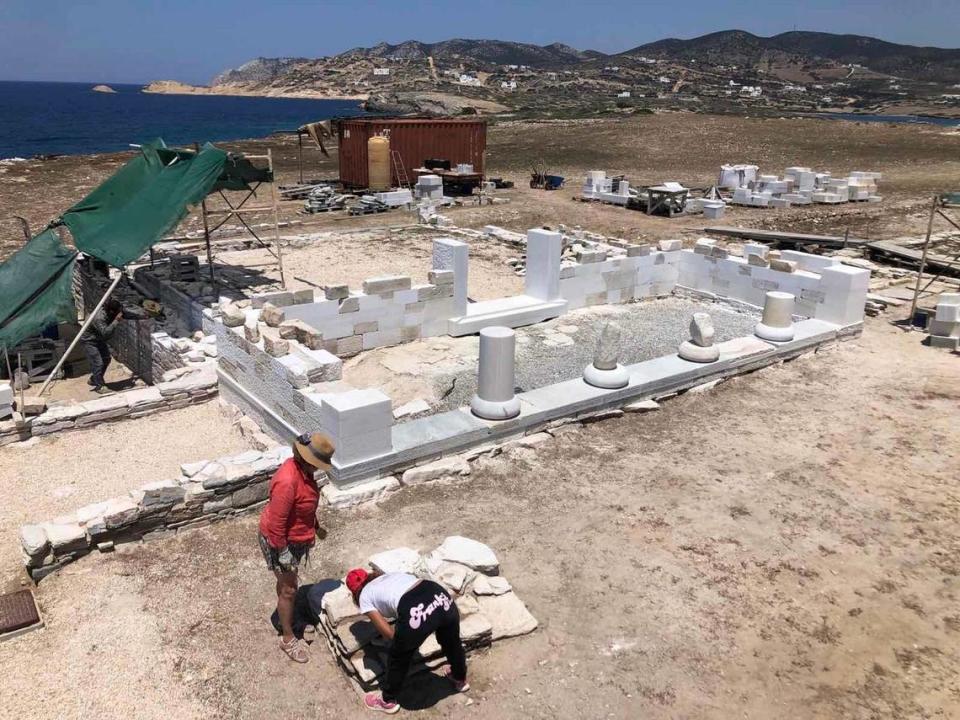Temple ruins on uninhabited Greek island reveal 2,400-year-old statues. Take a look
Entering the temple, ancient worshipers passed under several sets of watchful marble eyes. The stone statues once gazed across a bustling settlement. Millennia later, the fragmented figures are the last occupants on an uninhabited Greek island.
The Mantra archaeological site is located along the coast of Despotiko island, the Greek Ministry of Culture and Sports said in an Aug. 21 news release. Excavations at the site began in 2001 and have uncovered ruins dating from the Iron Age to the eighth century A.D.
While excavating near a ruined temple for the god Apollo, archaeologists found several walls that likely formed an entrance hall. Amid the rubble, they found several parts of a statue, the release said.
The marble statue was about 2,480 years old and depicted a male figure standing upright, a type of statue known as a kouros, archaeologists said. A photo shows the carved figure’s upper body and torso. Its lower legs, arms and face are gone.
Kouros statues were “popular” in ancient Greek culture from the sixth century B.C. to the fourth century B.C., according to Britannica. The young male figures were used as tombstones, monuments and “sometimes represented the god Apollo.”
Apollo was “one of the most widely revered and influential of all the ancient Greek and Roman gods,” according to Britannica. Among his many meanings, he was worshiped as the god of “religious law,” prophecy, crops and the sun.

Archaeologists previously found fragments of two other kouros statues in the area, the release said.
When Mantra’s ancient Apollo sanctuary was functional, the statues were part of the entranceway, archaeologists said. After it was abandoned, the statues were reused as building materials. A photo shows a wall section where a carved head and torso form part of the structure.

Archaeologists excavated new sections of the site’s water management system, including an oval water tank, according to the release. A photo shows the large, inset structure. Stones line its edges and a conduit channel runs out of one side.

Excavations also unearthed a four-room building with an unknown purpose, the release said. Pottery artifacts found in the structure dated to the fifth or sixth century B.C.

On the other side of the Mantra site, archaeologists worked on restoring a 2,600-year-old religious structure. Photos show the rectangular, white columned building.

Despotiko island is about 100 miles southeast of Athens, located on the southern tip of mainland Greece.
Google Translate was used to translate the news release from the Greek Ministry of Culture and Sports.
Dinosaur bone found beside ancient grave may have belonged to ‘first fossil hunters’
Secret tunnel — with key purpose — uncovered beneath palace ruins in Poland. See it
Mysterious society once inhabited Mexico. Now construction has uncovered its remains

